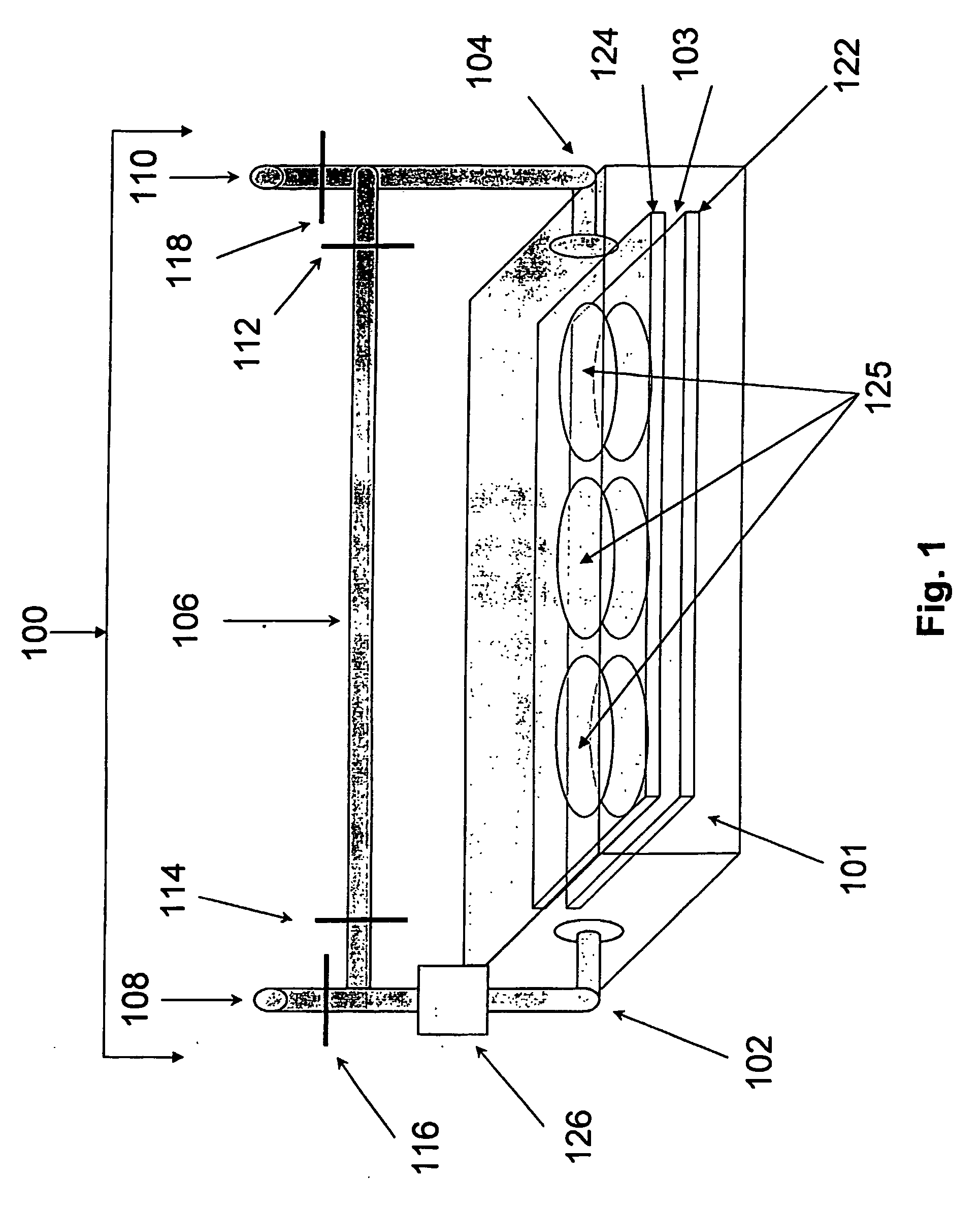Human tissue specific drug screening procedure
a tissue-based, drug-specific technology, applied in the field of human tissue-based drug screening procedures, can solve the problems of limited ability of pharmaceutical researchers to assess these compounds in an affinity-based tissue binding assay, many programs are aborted after decades of costly yet fruitless, and achieve the effects of reducing the length of incubation time, high binding level, and reducing the library of compounds
- Summary
- Abstract
- Description
- Claims
- Application Information
AI Technical Summary
Benefits of technology
Problems solved by technology
Method used
Image
Examples
example 2
One Step Direct Application Method
[0064] In an alternative illustrative embodiment a library of drug candidates for breast cancer comprised of 10,000 peptides are assessed. The goal of the assessment using a direct method is the identification of those compounds within the library that are specific for breast cancer.
[0065] A peptide mixture containing 10,000 peptides is prepared by combining approximately 0.1 .mu.g / ml of each peptide within a vial containing 50% blood within a PBS buffer. The peptide mixture is applied to 2D HPLC (Wagner, K., et al.) and approximately 400 fractions are collected. The collected fractions are analyzed using MALDI-TOF mass spectroscopy and each peptide is identified. After identification, peptides are biotinylated (Pierce Biotechnology, Rockford Ill.) and detection peak profiles are established using an ultra sensitive detection method (Scorilas, A, et al.). Each peptide's 2D HPLC profile and individual detection limits are established.
[0066] Twenty ti...
PUM
| Property | Measurement | Unit |
|---|---|---|
| volume | aaaaa | aaaaa |
| pH | aaaaa | aaaaa |
| pH | aaaaa | aaaaa |
Abstract
Description
Claims
Application Information
 Login to View More
Login to View More - R&D
- Intellectual Property
- Life Sciences
- Materials
- Tech Scout
- Unparalleled Data Quality
- Higher Quality Content
- 60% Fewer Hallucinations
Browse by: Latest US Patents, China's latest patents, Technical Efficacy Thesaurus, Application Domain, Technology Topic, Popular Technical Reports.
© 2025 PatSnap. All rights reserved.Legal|Privacy policy|Modern Slavery Act Transparency Statement|Sitemap|About US| Contact US: help@patsnap.com



